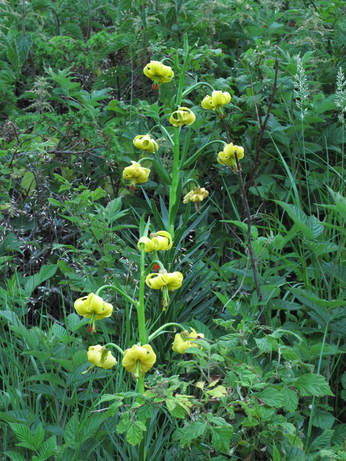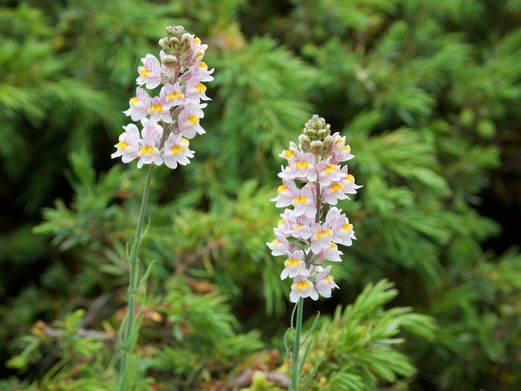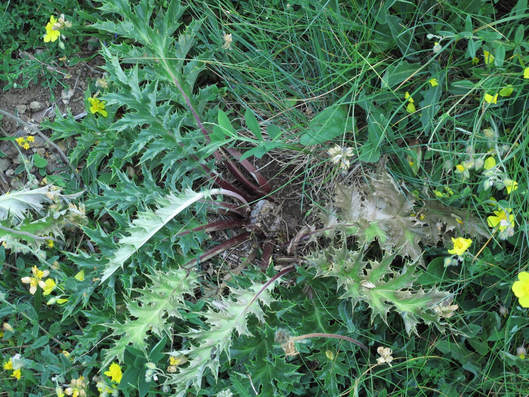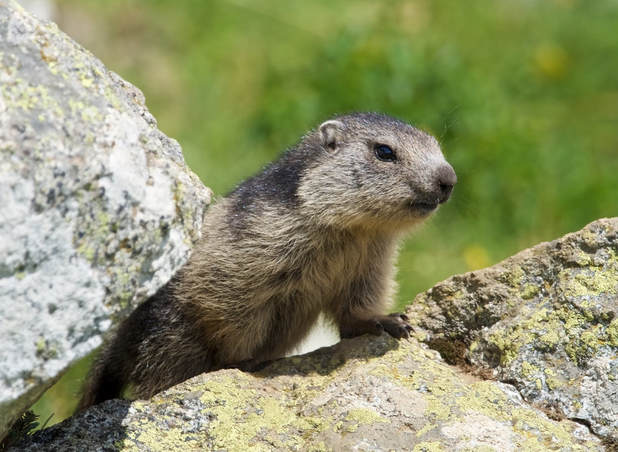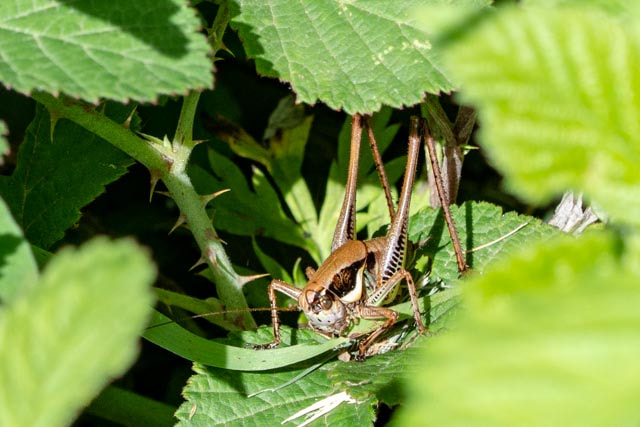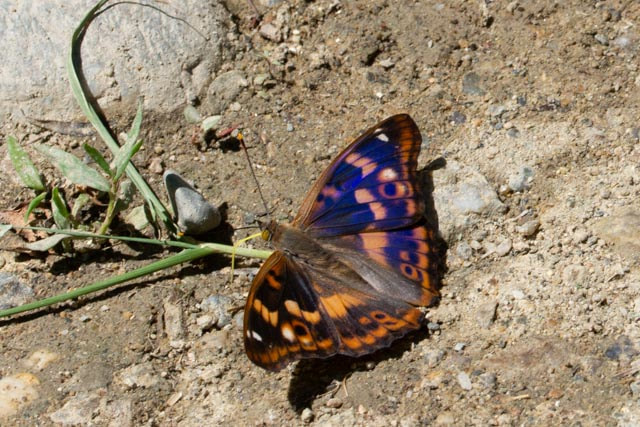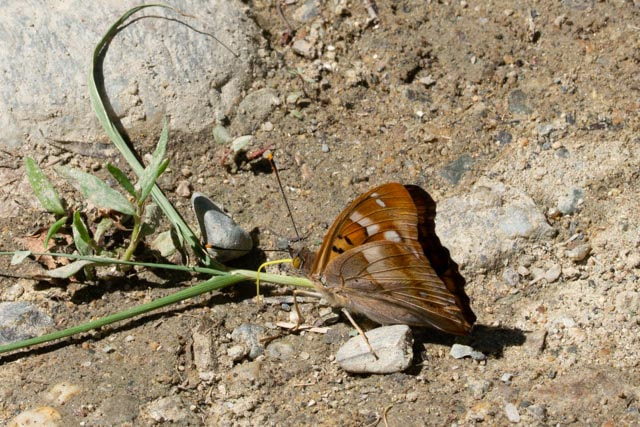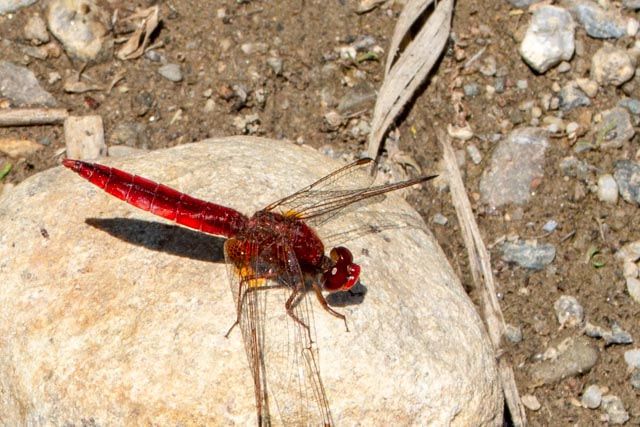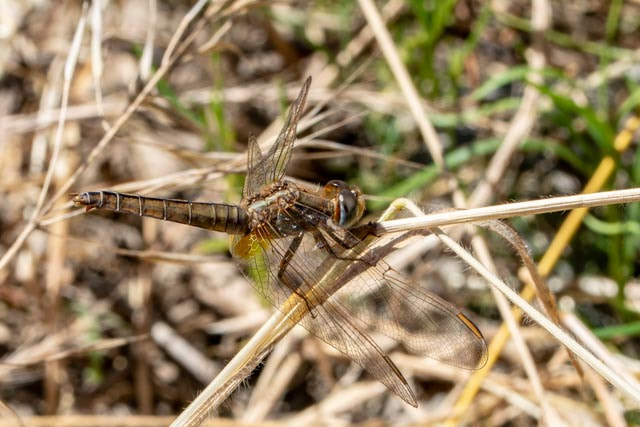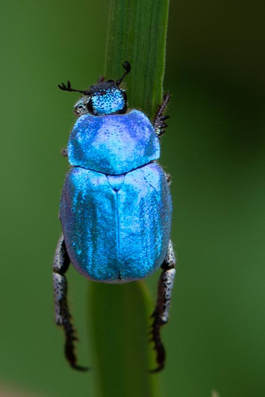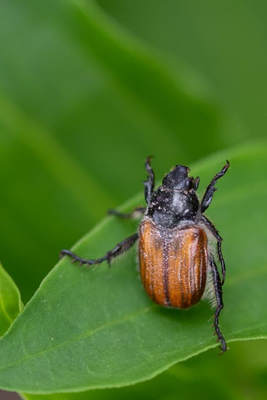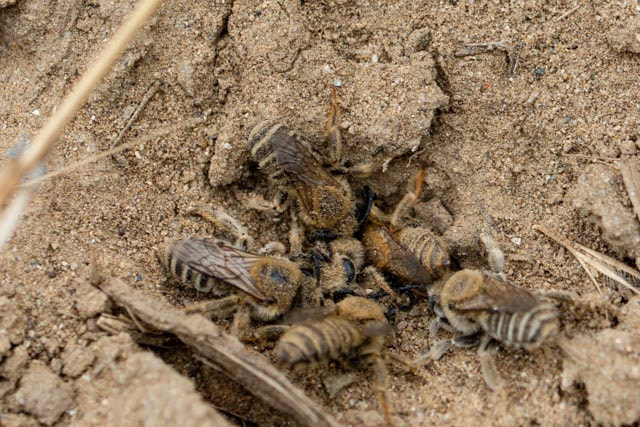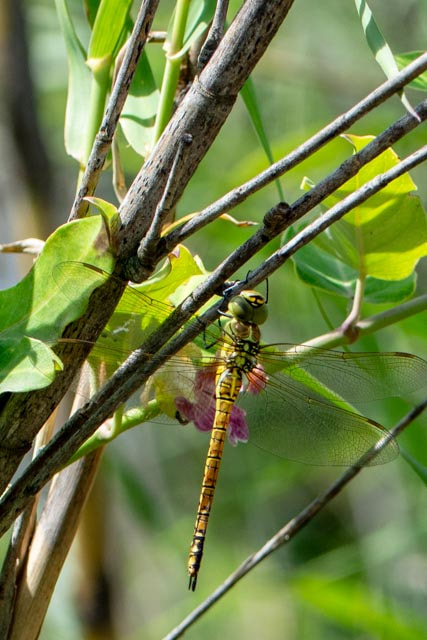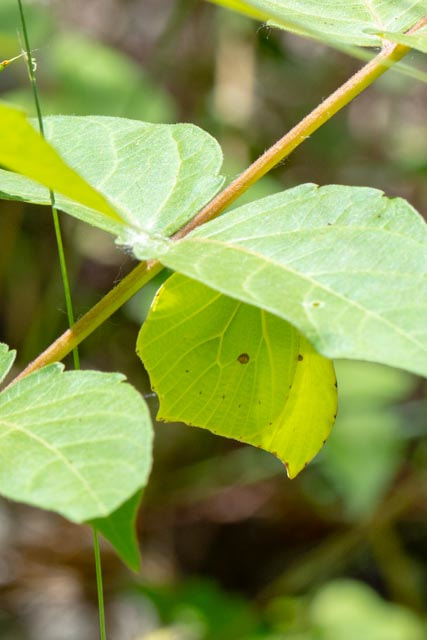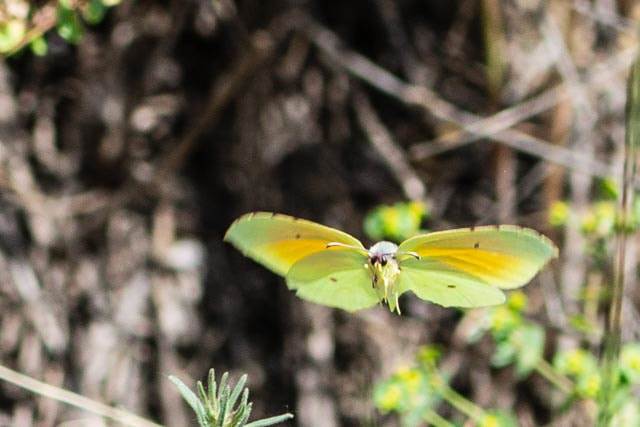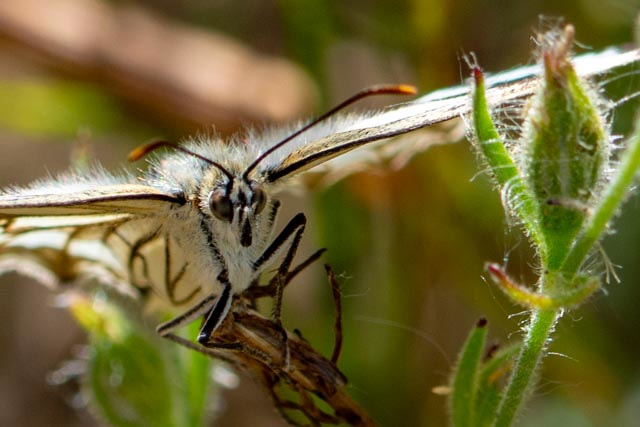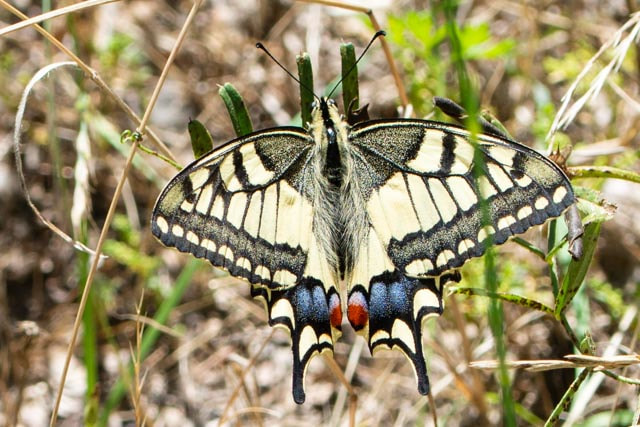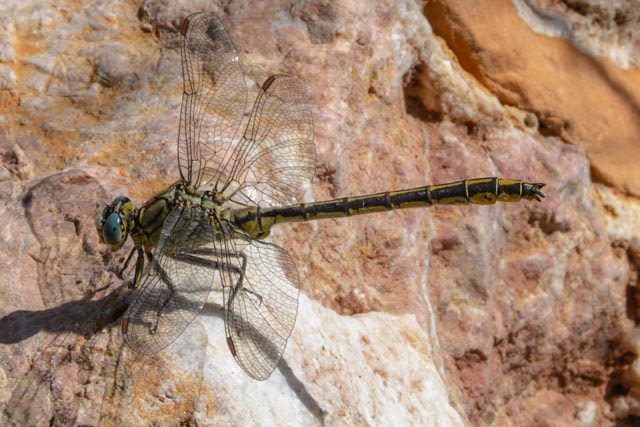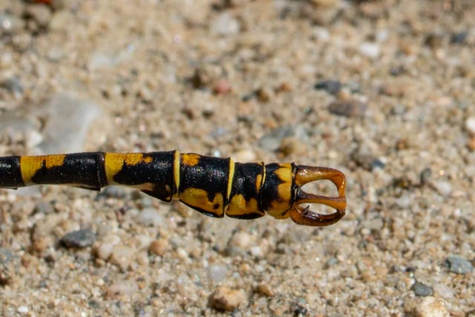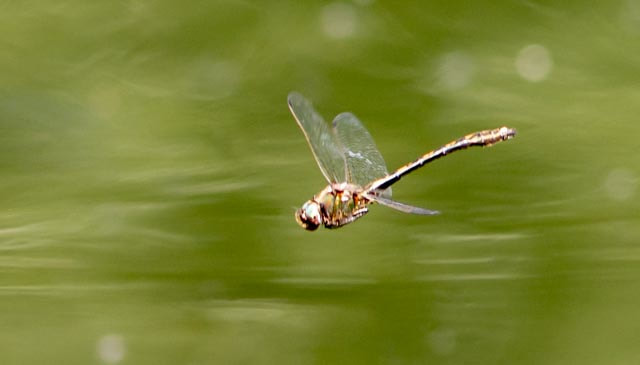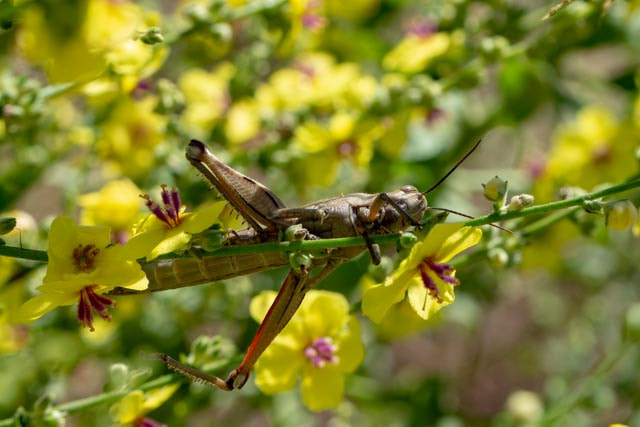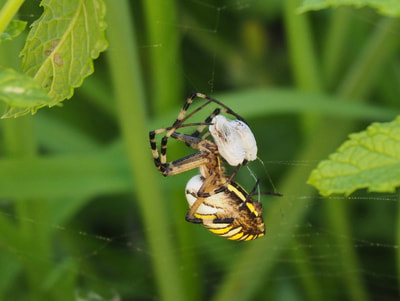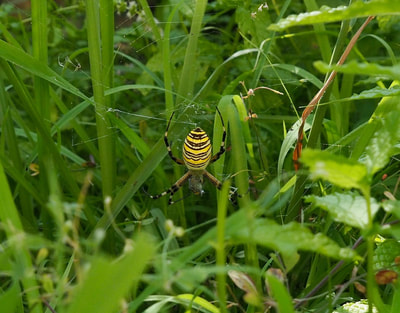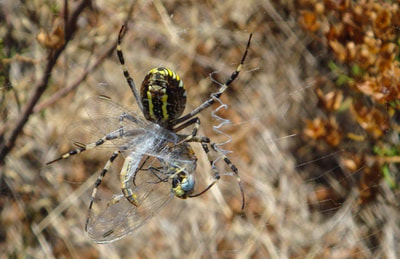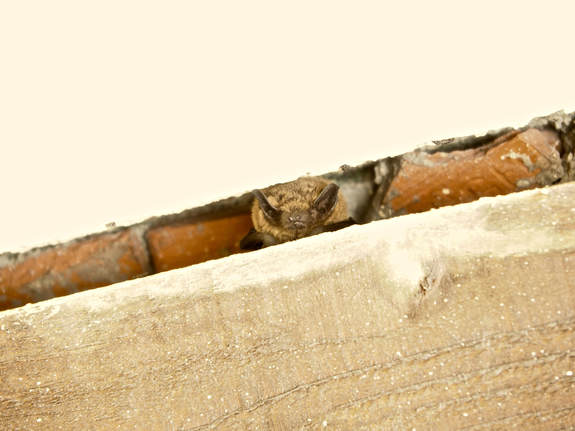We made two visits to our favourite local upland in the early summer; like most trips, there were good sightings and no-shows. Of the latter, once again there was an almost complete lack of big birds – we had a couple of views of griffon vultures, but that was really all. The usual ravens and choughs were present and voluble, which was nice, and skulking in the bushes were several thrush-size brownish birds, on which I am still pondering; some decent views would have helped!
But high spots there were in plenty. Because of the unusual amount of rain in the late spring and early summer, the flowers were wonderful. There was a magic carpet in whichever direction you looked. From the track that goes along to the tower itself, shading upwards to the gentle summits and the col, it was the little yellow cistus, rock-rose-type flower which dominated, but there were umpteen other species in bloom. As a result, the butterflies, particularly the tiny blues and little copper-coloured ones were like confetti – again best seen in the few damp patches along the trackside.
One of the most interesting areas was the rougher ground through which we descended to the track and the van. This is where the growth of higher vegetation, stunted pines and prickly juniper and bramble, is beginning to recolonise the grazed grassland. It is quite hard walking, and you need to choose your route carefully, but it is clear, for a start, that many of the elusive smaller birds nest within it, and there are one or two botanical treats lurking in the undergrowth. Things growing out of prickly bushes are not unusual; sometimes it may be because the prickly bush protects the more delicate plant (or bush or sapling) from grazing, sometimes because birds often sit on top of the prickly bushes, and … well, you can work the rest of that out for yourself, but there are a number of plants which regenerate best if the seed is passed through a bird! And so again, you will have the prickly bush protecting something growing up within it.
We saw two plants growing like this, and both were rather lovely. Both, too, were quite new to us, although the first was known to us from many illustrations; it was something I had long wanted to see. The picture below of the pyrenean lily (simply Lilium pyrenaicum) is, I am afraid, not quite in focus – I was standing on a really steep slope, one bare leg in the prickly juniper, the other perilously close to some very healthy nettles, focussing sharply uphill!
